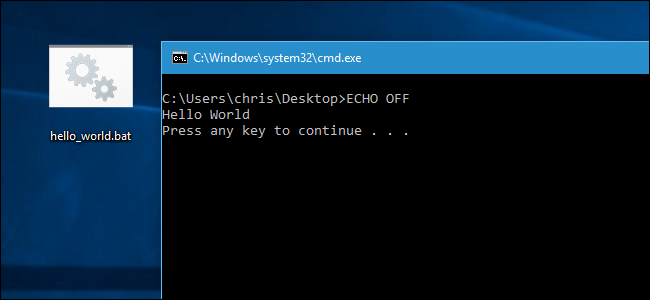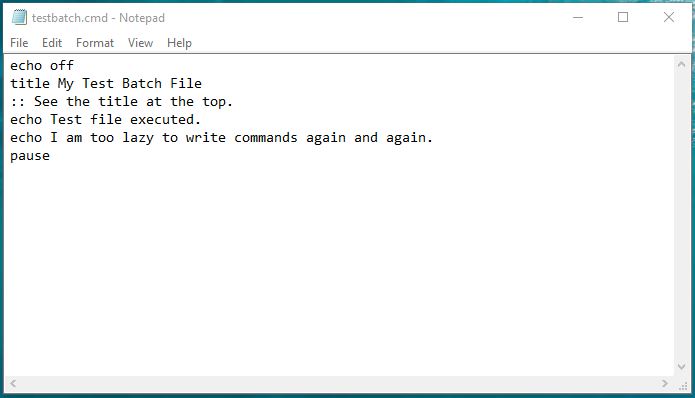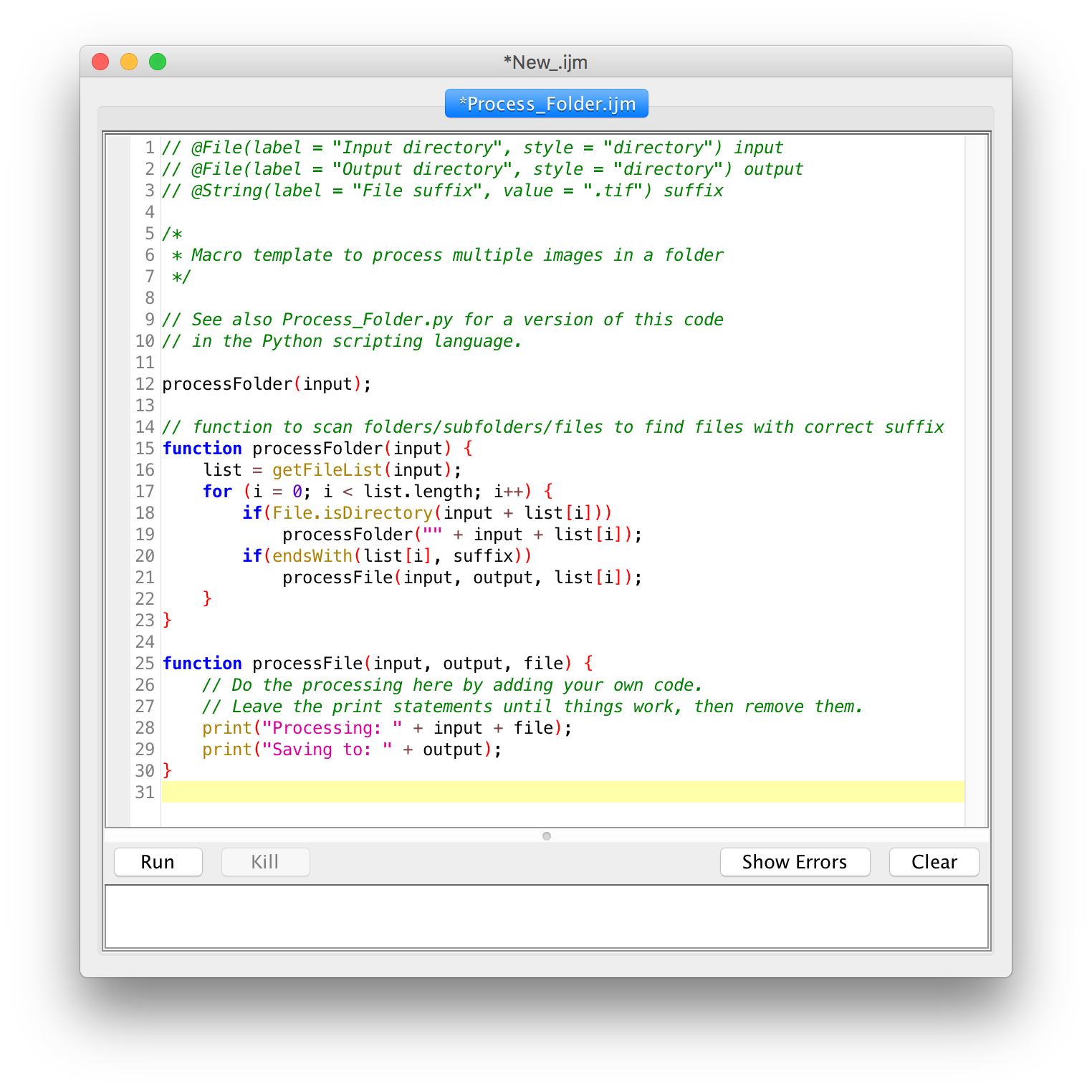
pushd - Change the current directory/folder and store the previous folder/path for use by the POPD command.for /r - Loop through files (Recurse subfolders).

Rem start at the top of the tree to visit and loop though each directory Recursively Visit Directories in a Directory Treeįor /r command can be used to recursively visit all the directories in a directory tree and perform a command.
#BATCH SCRIPT EXAMPLE RUN FILESS CODE#
Note, how long command strings are split into several code lines, and command groups are separated by parentheses. If defined result echo Performing user tasks. & (echo Found in log %%i & goto :end) || (echo Not found in log %%i & set "result=1")) Type !last! | find /n /i "Completed" >nul 2>&1 > %temp%\Completed.log ^ More advanced example shows, how derived in FOR loop from a restricted files set data can be used to redirect batch execution, while saving the searched content to a file: offįor /f %%i in ('dir "%temp%\test*.log" /o:-d /t:w /b') do ( for /F "tokens=*" %%A in (C:\scripts\testFile.txt) do ( The following will echo each line in the file C:\scripts\testFile.txt. Use double quotes for long file names in "files" Tokens=n Numbered items to read from each line or string to process Skip=n Number of lines to skip at the beginning of file and text stringsĮol= Character at the start of each line to indicate a comment Here's a list of options that can be used:ĭelims=x Delimiter character(s) to separate tokens Then, following will be the output of the above code.The for command accepts options when the /f flag is used. Let’s assume that there is a file called set2.txt in the C drive and that there is no file called set3.txt. If exist C:\set3.txt (echo "File exists") else (echo "File does not exist") Following is the general syntax of the statement.įollowing is an example of how the ‘if exists’ statement can be off If defined str3 (echo "Variable str3 is defined") else (echo "Variable str3 is not defined")Īnother special case for the ‘if’ statement is the "if exists ", which is used to test for the existence of a file. If defined str1 echo "Variable str1 is defined" Following is the general syntax of the statement.įollowing is an example of how the ‘if defined’ statement can be off If the above code is saved in a file called test.bat and the program is executed asįollowing will be the output of the above program.Ī special case for the ‘if’ statement is the "if defined", which is used to test for the existence of a variable. If %3%=3 (echo "The value is 3") else (echo "Unknown value") If %2%=2 (echo "The value is 2") else (echo "Unknown value")


If %1%=1 (echo "The value is 1") else (echo "Unknown value") The following example show how the ‘if’ statement can be used to check for the values of the command line off The ‘if else’ statement can also be used for checking of command line arguments. Since the condition of the second ‘if’ statement evaluates to false, the echo part of the statement will not be executed. If so, then it echo’s a string to the command prompt. The first ‘if’ statement checks if the value of the variable str1 contains the string “String1”. If %str2%=String3 (echo "The value of variable c is String3") else (echo "Unknown value") If %str1%=String1 (echo "The value of variable String1") else (echo "Unknown value") The following example shows how the ‘if else’ statement can be used to off The same example can be repeated for strings. The above command produces the following output. In the second ‘if else’ statement, the else condition will be executed since the criteria would be evaluated to false. In the first ‘if else’ statement, the if condition would evaluate to true. If the brackets are not placed to separate the code for the ‘if and else’ code, then the statements would not be valid proper if else statements. The key thing to note about the above program is −Įach ‘if else’ code is placed in the brackets (). If %c%=10 (echo "The value of variable c is 10") else (echo "Unknown value") If %c%=15 (echo "The value of variable c is 15") else (echo "Unknown value") The following example shows how the ‘if’ statement can be used for off The evaluation of the ‘if’ statement can be done for both strings and numbers. Just like the ‘if’ statement in Batch Script, the if-else can also be used for checking variables which are set in Batch Script itself. The following diagram shows the flow of the ‘if’ statement. If the condition is false, it then executes the statements in the else statement block and then exits the loop. If the condition is true, it then executes the statements thereafter and stops before the else condition and exits out of the loop. The general working of this statement is that first a condition is evaluated in the ‘if’ statement. If (condition) (do_something) ELSE (do_something_else)

Following is the general form of this statement. The next decision making statement is the If/else statement.


 0 kommentar(er)
0 kommentar(er)
